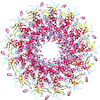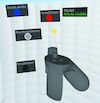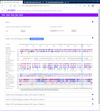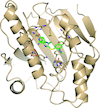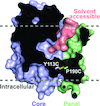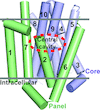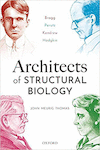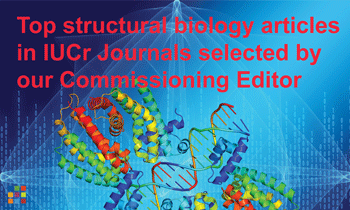issue contents
January 2021 issue

Cover illustration: Using a partial atomic model from medium resolution cryo-EM to solve a large crystal structure: the portal protein of the T7 bacteriophage, gp8 [Fàbrega-Ferrer et al. (2021), Acta Cryst. D77, 11-18].
CCP4
Open  access
access
 access
accessThe employment of directed acyclic graphs to advance the tracking, control and appraisal of crystallographic phasing strategies is discussed.
Open  access
access
 access
accessA partial 30% atomic model from a 7.8 Å resolution cryo-EM volume was used to phase X-ray data by molecular replacement.
Open  access
access
 access
accessVirtual reality-specific tools for model building are possible, and can provide an order-of-magnitude speedup over mouse-and-keyboard tools in certain situations.
Open  access
access
 access
accessThe LAHMA web server for structural analysis of homologous proteins is presented.
Open  access
access
 access
accessTEMPy2, an update of the TEMPy package to process, optimize and assess cryo-EM maps and the structures fitted to them, is presented.
Open  access
access
 access
accessAtomic models derived from cryo-EM data with map resolutions of better than 5 Å were automatically re-refined. The results of the computations are publicly available on a web page.
research papers
Open  access
access
 access
accessA motorized X–Y microscope stage is presented that combines human fine motor control with machine assistance and automated experiment documentation in order to transform productivity in protein crystal harvesting.
Open  access
access
 access
accessA likelihood-based method is improved to correct for dynamical scattering in weakly diffracting protein nanocrystals. The method has been tested on three protein crystals and yielded better refinement statistics and structure interpretations, including charge estimations of bound ions.
A high-resolution crystal structure of the Hsp90N–Debio0932 complex was successfully determined. Based on the crystal structure of the complex and on molecular-interaction analysis using thermal shift analysis and isothermal titration calorimetry, 30 new Debio0932 derivatives were designed and evaluated by molecular docking. Moreover, Debio0932 exhibited favourable in vitro anti-non-small-cell lung cancer activity.
PDB reference: Hsp90N in complex with Debio0932, 6lr9
The solution of protein structure at atomic resolution using charge-flipping techniques operating on hundreds of virtual computers in the cloud is described. New techniques include the use of space-group symmetry restraints as well as the insertion of electron-density peaks.
An engineered disulfide bridge traps and validates an outward-facing conformation in a bile acid transporter from Yersinia frederiksenii.
Crystal structures and docking of a bile acid transporter from Y. frederiksenii reveal details of the substrate-binding mechanism.
addenda and errata
Open  access
access
 access
accessbook reviews
Free 



 journal menu
journal menu










